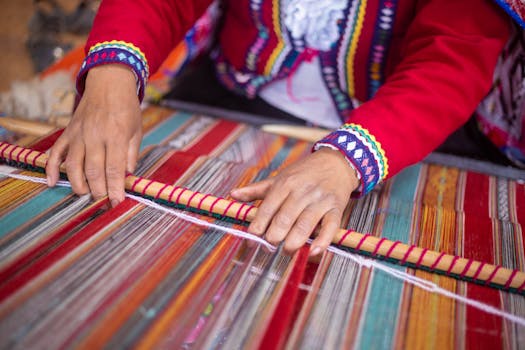Connecting Cultures: The Story Behind Africa’s Diverse Fiber Traditions – WordPress

Connecting Cultures: The Story Behind Africa’s Diverse Fiber Traditions – WordPress
Connecting Cultures: The Story Behind Africa’s Diverse Fiber Traditions is a fascinating topic that highlights the importance of fiber art in African cultures. Africa’s diverse fiber traditions are a testament to the continent’s rich cultural heritage. From the vibrant kente cloth of Ghana to the intricate basketry of South Africa, each region has its unique fiber art form that reflects its history, mythology, and values.
African fiber traditions have been passed down from generation to generation, with each community developing its distinct techniques, materials, and symbolic meanings. The use of fiber in African cultures is not only functional but also carries deep spiritual and cultural significance. In many African societies, fiber art is used to communicate messages, tell stories, and convey social status.
The History of African Fiber Traditions
The history of African fiber traditions dates back thousands of years, with evidence of textile production found in ancient Egyptian, Nubian, and Ethiopian civilizations. The trans-Saharan trade route, which connected West Africa to the Mediterranean region, played a significant role in the spread of fiber art techniques and materials across the continent. African fiber traditions were also influenced by Islamic and European contacts, which introduced new materials, techniques, and designs.
One of the most iconic African fiber traditions is the kente cloth of Ghana. Originating from the Akan people of Ghana and the Ivory Coast, kente cloth is a vibrant and colorful textile that reflects the history, philosophy, and cultural values of the Akan people. The cloth is made from cotton and silk threads, woven into intricate patterns and designs that convey messages about royalty, wisdom, and community.
The Cultural Significance of African Fiber Traditions
African fiber traditions are more than just beautiful textiles; they carry deep cultural and spiritual significance. In many African societies, fiber art is used to communicate messages, tell stories, and convey social status. For example, in some African cultures, the type of cloth worn can indicate a person’s marital status, age, or social position. Fiber art is also used in initiation ceremonies, weddings, and other important life events, where it plays a significant role in symbolizing transition, transformation, and community.
The cultural significance of African fiber traditions is also reflected in the materials used. Natural fibers such as cotton, wool, and silk are often preferred, as they are believed to possess spiritual properties and connections to the natural world. The use of natural dyes, such as indigo, pomegranate, and turmeric, also carries symbolic meanings, as these colors are associated with fertility, prosperity, and protection.
Promoting Cultural Diversity and Exchange
African fiber traditions are a powerful tool for promoting cultural diversity and exchange. By sharing and learning about these traditions, we can gain a deeper understanding and appreciation of the rich cultural heritage of Africa. The internet and social media have made it possible for people around the world to connect with African fiber artists, learn about their techniques and materials, and purchase their products.
WordPress, as a platform, has played a significant role in promoting African fiber traditions. Many African fiber artists and designers use WordPress to showcase their work, share their stories, and connect with customers and collaborators. The platform’s flexibility and customizability have made it an ideal choice for creating online portfolios, blogs, and e-commerce sites that reflect the unique aesthetic and cultural values of African fiber art.
Conclusion
In conclusion, Connecting Cultures: The Story Behind Africa’s Diverse Fiber Traditions is a fascinating topic that highlights the importance of fiber art in African cultures. African fiber traditions are a testament to the continent’s rich cultural heritage, reflecting its history, mythology, and values. By promoting cultural diversity and exchange, we can gain a deeper understanding and appreciation of these traditions and support the preservation of Africa’s rich cultural heritage.


